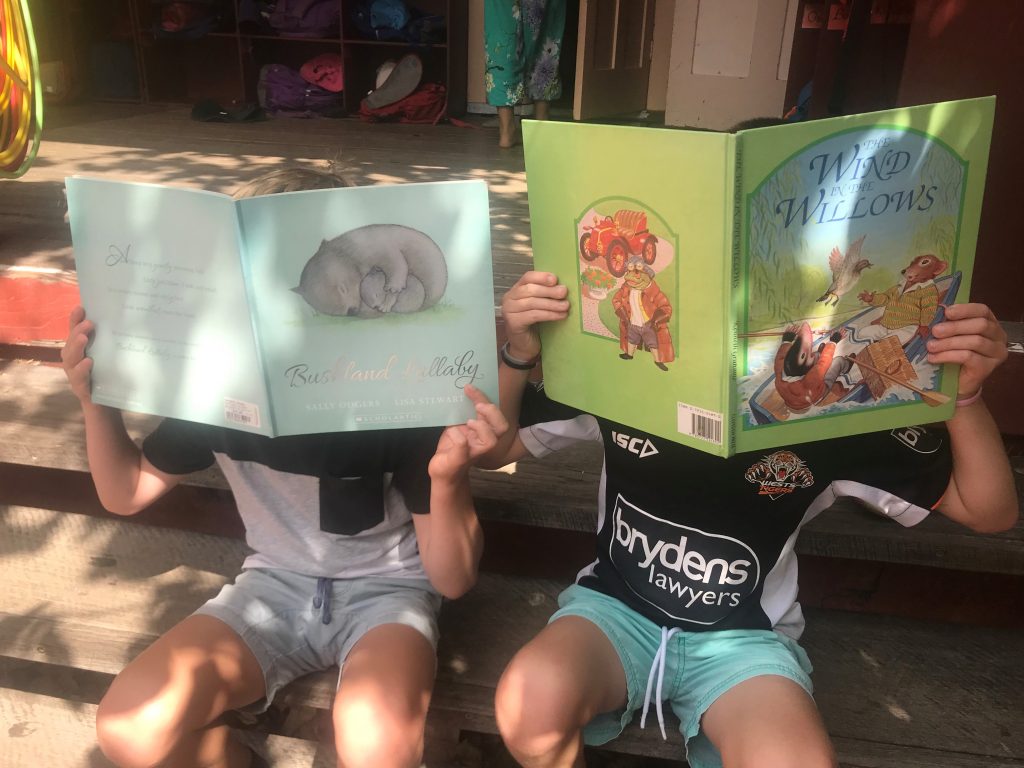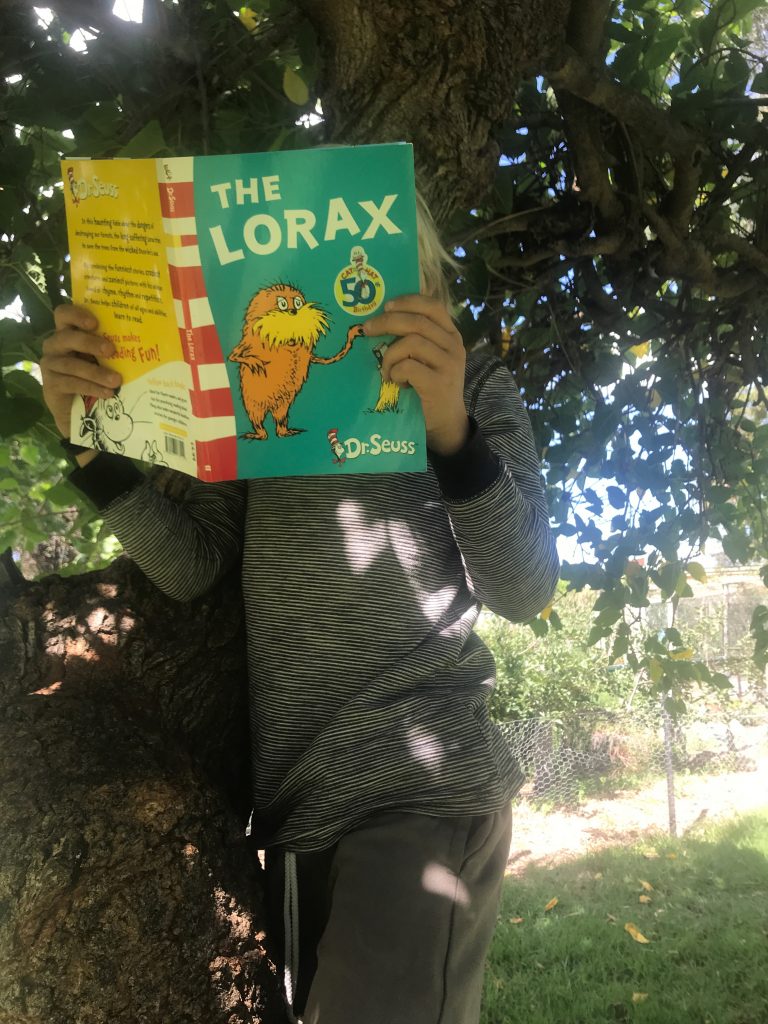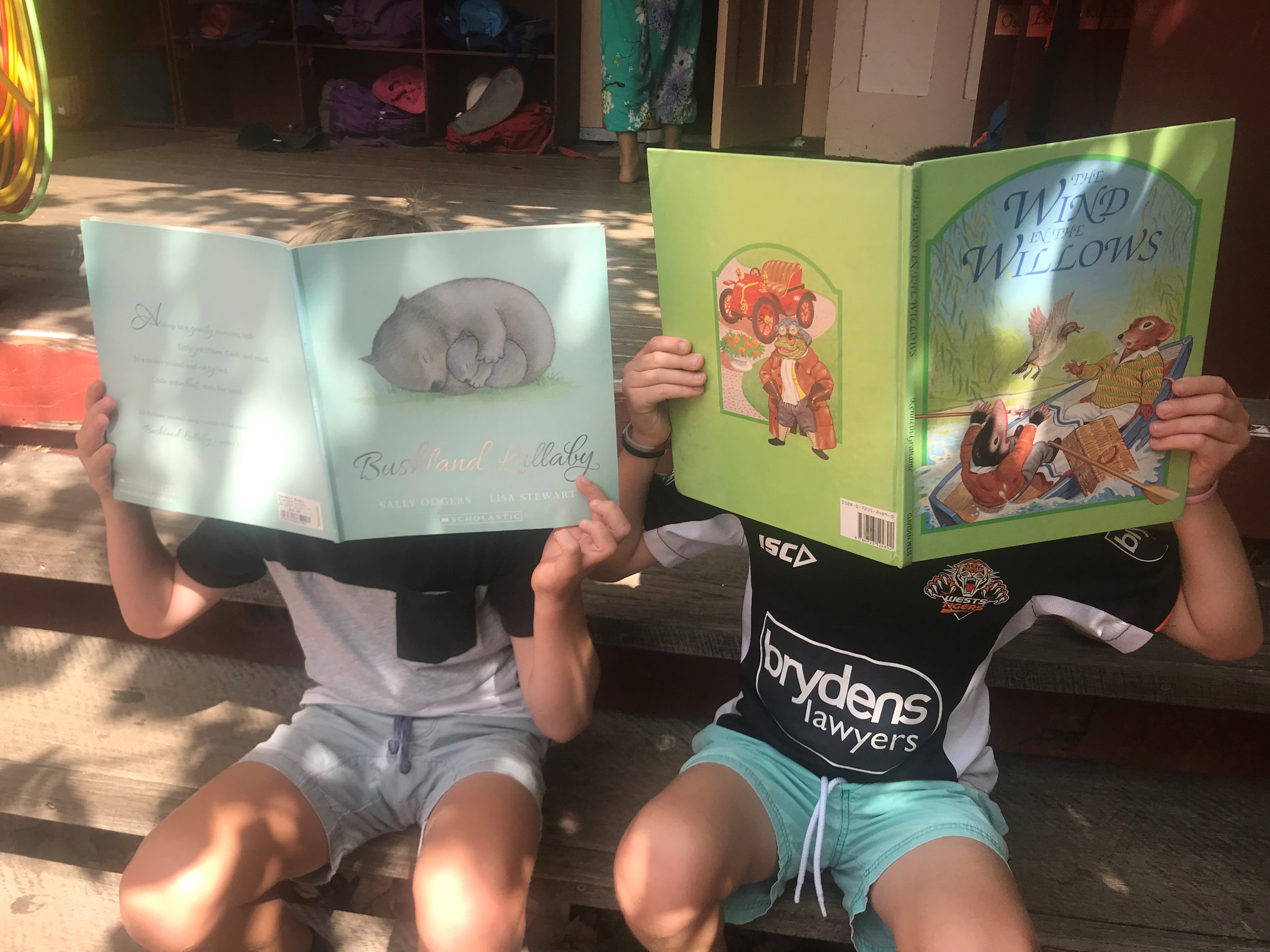“Have you considered the Steiner school?” I asked a friend. “Oh, we looked at it, but ruled it out because they don’t believe in books. We are a family of readers,” she emphasized.

I was taken aback. Did my friend think that my husband and I didn’t value books or reading?
I knew that reading wasn’t formally taught in a Steiner prep, and I’d heard that children created their own books, but in all my research, I’d never heard that Steiner schools were anti-books.
I would soon learn that this was a common misconception about Steiner education. Read on to find out more.
The Evolution of Language
In the Evolution of humanity, spoken language developed first. Then came written language, originally through symbols. Finally, once there was a written language, people learned to read.
Steiner believed that modeling this sequence of skills of language mastery was the way literacy should be taught. For this reason, during the first cycle of life – from birth to age seven, the focus should be on the spoken word.
In Steiner schools children hear stories, nursery rhymes, nature stories, folktales and fairy tales. The teacher is careful to use clear speech and to enunciate letter sounds to highlight their phonemic properties. In early childhood, language is taught through story time and circle time. Songs, movement, verses, rhymes and poems are shared daily and repeated often. It may look like play, but language skills are being developed daily.
Because the same circle time sequence is repeated daily for 2-3 weeks at a time, children learn the songs and verses ‘by heart’ and will retain them for life. Steiner stressed the importance of repetition and is now backed up by current brain research that confirms repetition aids a child’s brain development.

In addition to our work with speech, we work on building a child’s fine motor skills through activities such as drawing, finger knitting and sewing to prepare them for the next stage of language development: writing.
While Steiner education has its origins in oral stories, his curriculum was developed prior to the digital age where the shift into a highly visual world has changed the way we communicate. In contrast, during digital media experiences a child merely watches the story unfold with little demand on their inner thoughts to shape the story. As a result, you will find more storybooks in our Kindergarten as teachers seek to engage those students whose hunger for images makes it difficult for them to hold an oral story. In storybooks, the imagination of the listener is highly engaged and he/she can draw on the illustrations to help create their own inner picture.
We strongly encourage our parents to immerse children in books and stories. Learning to read is a process that begins from infancy and the earliest experiences of lullabies, nursery rhymes and books provide the foundation upon which early literacy lies.
Maryanne Wolf, wrote beautifully about the Beginning of Reading Development in her book, ‘Proust and the Squid”, telling the story of why reading to children is so important. Some excerpts are included below.
“Decade after decade of research shows that the amount of time a child spends listening to parents and other loved ones read is a good predictor of the level of reading attained years later.”
“Victoria Purcell-Gates, an internationally recognized researcher and professor in the field of literacy education, looked at two groups of five year old children before they could read. The groups were similar on many social variables but one group had been well read to and the other group had not.”
“The differences were unmistakable. When the children of the well-read to group told their own stories, they used more of the special language of books with longer and more sophisticated phrases and clauses. This ability provides a foundation for many comprehension skills children use later when beginning to read and write their own stories.
“The more children are spoken to, the more they will understand oral language. The more children are read to, the more they understand all the language around them and the more developed their vocabulary becomes. The intertwining of oral language, cognition and written language makes early children one of the richest times for language growth”
“Imagine the following scene. A small child sits in rapt attention on the lap of a beloved adult, listening to words that move like water, words that tell of fairies, dragons and giants in faraway places never before imagined. The young child’s brain prepares to read far earlier than one might ever suspect, and makes use of almost all the raw material of early childhood, every perception, concept and word. It does so by learning how to use the important structures that will make up the brains universal reading system.”

The progression from spoken word to written word happens seamlessly and both reading and storytelling offer young children the opportunity to enjoy stories, become familiar with new words (vocabulary) and focus on the progression of the story (comprehension).
Sharing stories also enhances the grammatical skills of children because it uses a special vocabulary that doesn’t appear in spoken language. You can see this in the passage below.
“Once, long ago, in a dark, lonely place where the sunlight was never seen, there lived an elfin creature with hollow cheeks and waxen complexion; for no light ever touched this skin. Across the valley, in a place where the sun played on every flower, lived a maiden with cheeks like rose petals, and hair like golden silk.”
You can also support your child’s emotional development through rich stories, with expressive text, that help the listener engage with their emotional life, absorbed through the narrative of the characters lives. Through this, young children learn to experience new feelings, which in turn, prepares them to understand more complex emotions.
“The child sitting on the lap of the person who reads to her already understands that pictures go with particular stories and that stories convey feelings that do with words – feelings that range from happiness to fear and sadness. Through stories and books she is beginning to learn a repertoire of emotions. Stories and books are a safe place for her to begin to try these emotions on for herself.”
“These stories exemplify thoughts and feelings experienced by many young children as they listen to stories and books. We may never fly in a hot-air balloon, win a race with a hare, or dance with a prince until the stroke of midnight, but through stories in books we can learn what it feels like.”
Wolf dedicated her book to Novelist Marcel Proust who wrote about how this emotional connection lies at the heart of how we communicate through written language.
So to debunk the myth about Steiner Education and books we say….
1. Read books for building vocabulary, language structure and rhyme
2. Tell stories for all of the above plus creating an inner picture
3. Repeat books and stories often.
And if you’ve come across the myth about whether to support early writing in the home – Do show and correct your child’s grip from an early age (2-3yrs), even while they are scribbling and drawing. When poor grips take hold they become a habit that is much harder to correct by Class 1 when they are formally beginning to write.
By Jane Andrew, Literacy Teacher


